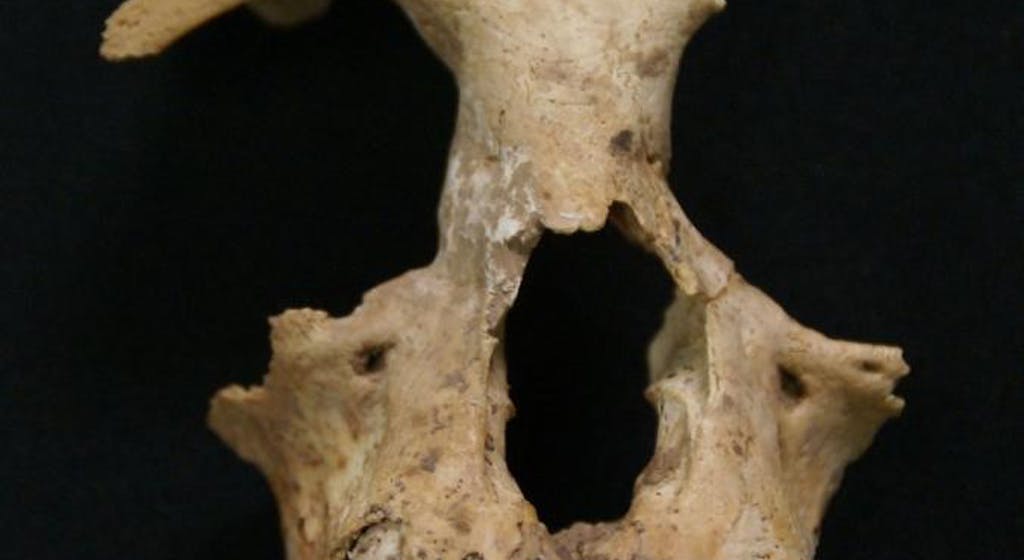
New, long-extinct ape species found in ancient Chinese tomb.
The new gibbon species, called Junzi imperialis, is believed to have been wiped out before the modern age as a result of human actions, leading to its extinction.
This comes after researchers found the gibbon’s partial skull buried beside an ancient Chinese royal, dating back 2,300 years.
Dr Samuel Turvey, lead researcher of the Zoological Society of London, told Science magazine: “All of the world’s apes – chimpanzees, gorillas, orang-utans and gibbons – are threatened with extinction today due to human activities, but no ape species were thought to have become extinct as a result of hunting or habitat loss.
“However, the discovery of the recently extinct Junzi changes this, and highlights the vulnerability of gibbons in particular.”
Scientists unearthed the tomb in Shaanxi Province, central China, which also contained other animals’ bones – including a lynx, leopards and a black bear.
In ancient China, gibbons were deemed as “noble” animals and were often kept as luxury pets.
It is believed the ape belonged to Lady Xia, the grandmother of China’s first emperor, Qin Shihuang, who instructed his army to build the Great wall of China and the Terracotta Warriors.
High-tech computer modelling software uncovered the new ape species – a genus gibbon which scientists estimate lived up to a few hundred years ago.
Dr Turvey said that any account of gibbons in China were only found in history books.
He added: “It is very, very far from any gibbon populations today.”
Chinese authorities banned Dr Turvey and his colleagues from extracting DNA from the bones, but they managed to conduct analyse the measurements of the gibbons and compare it with existing ape species, discovering that its skull and jaw width belonged to an entirely new species.
Researchers believe the gibbon species was wiped out as a result of intense human pressures on the environment, according to co-researcher Prof Helen Chatterjee of University College London.
Ms Chatterjee said: “Our historical data shows that these factors caused a southward shift of gibbons towards their present day distribution which is restricted to the very far south of China – and in the case of Junzi, its eventual extinction.”
It is believed the gibbon species’ extinction was caused after the ancient Chinese expanded into the area’s forest region, leading to its massive wipeout.
Around 60 percent of all primate species around the world face the threat of extinction, including chimpanzees, gorillas and orangutans.













